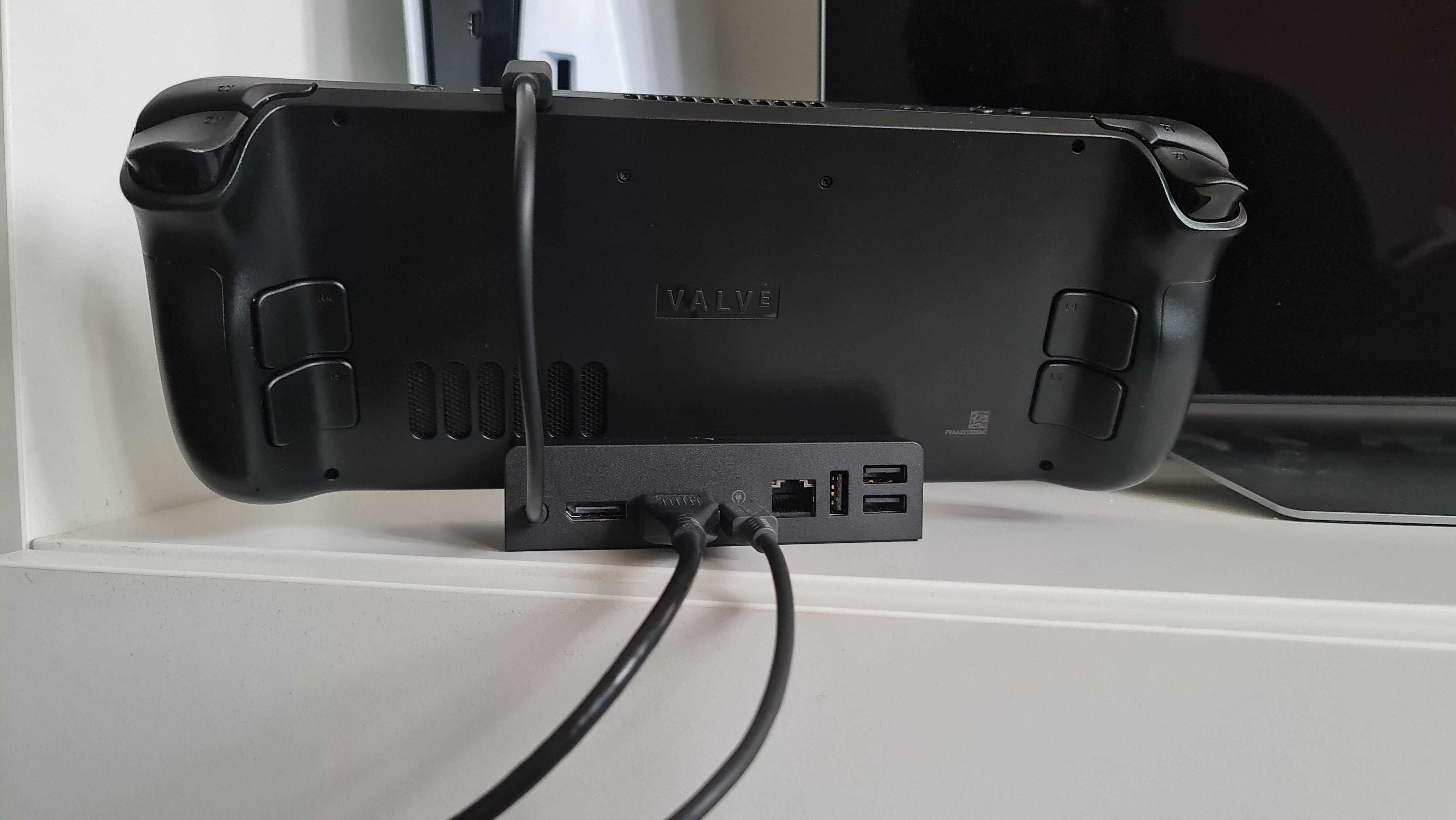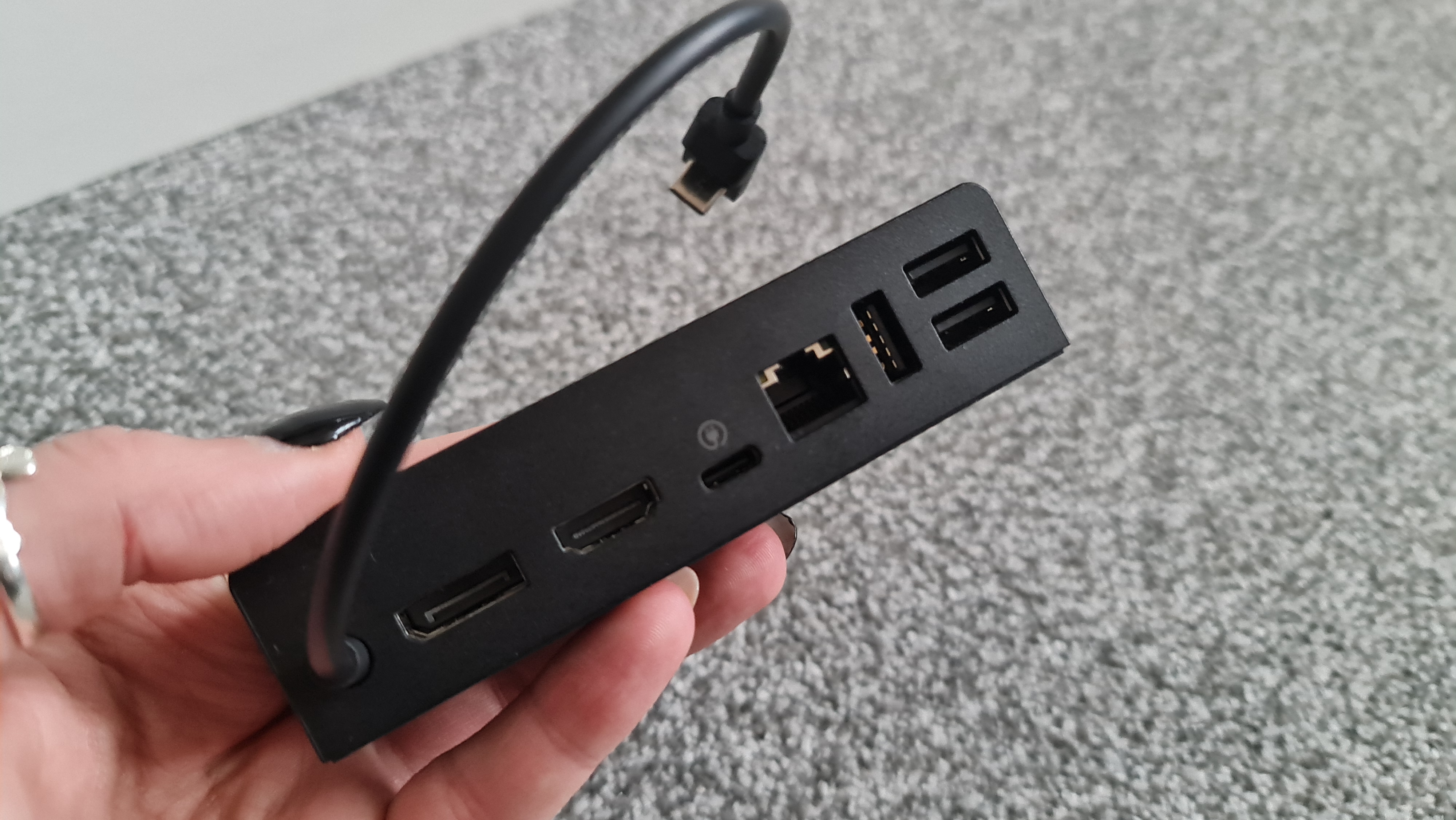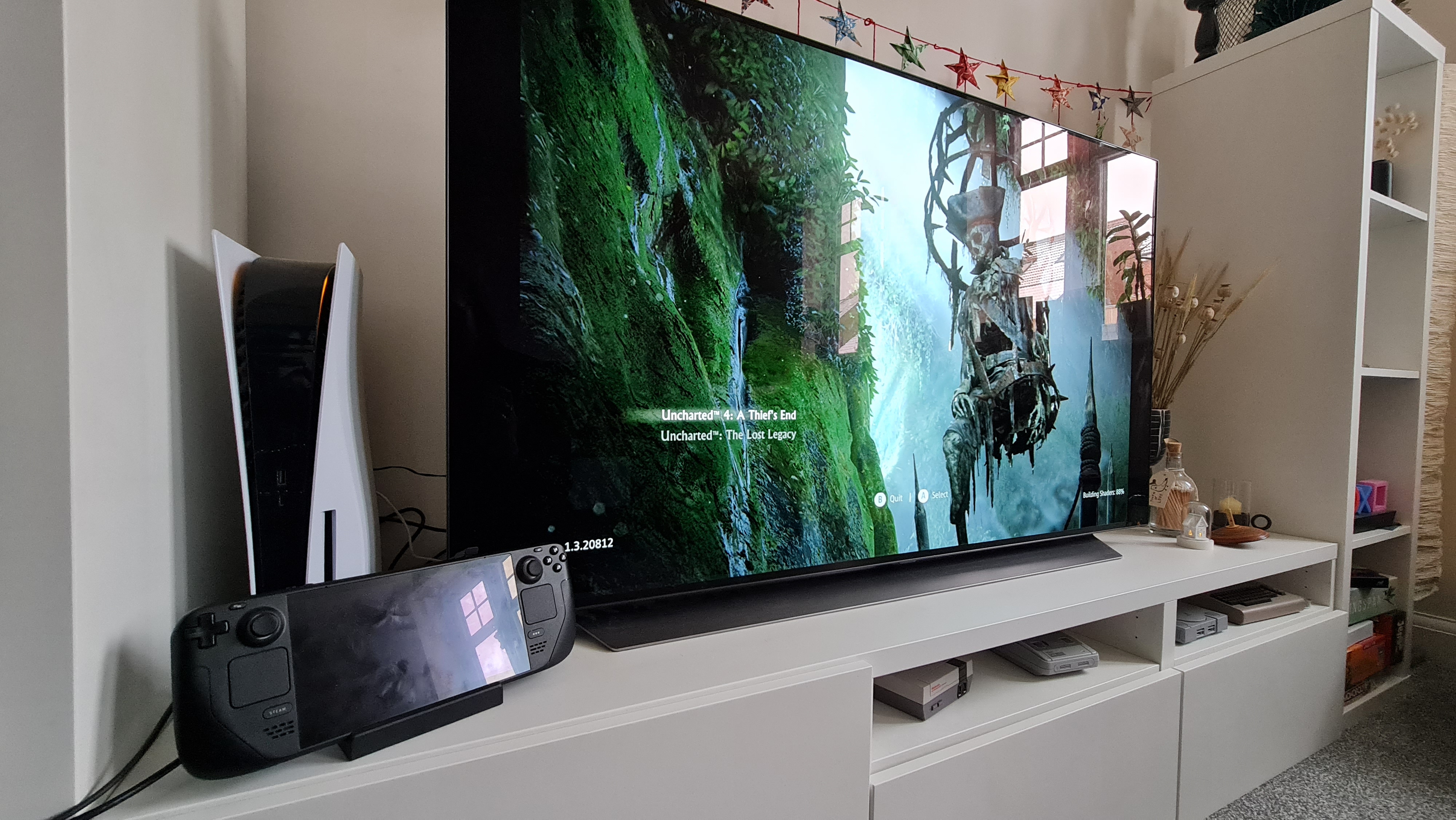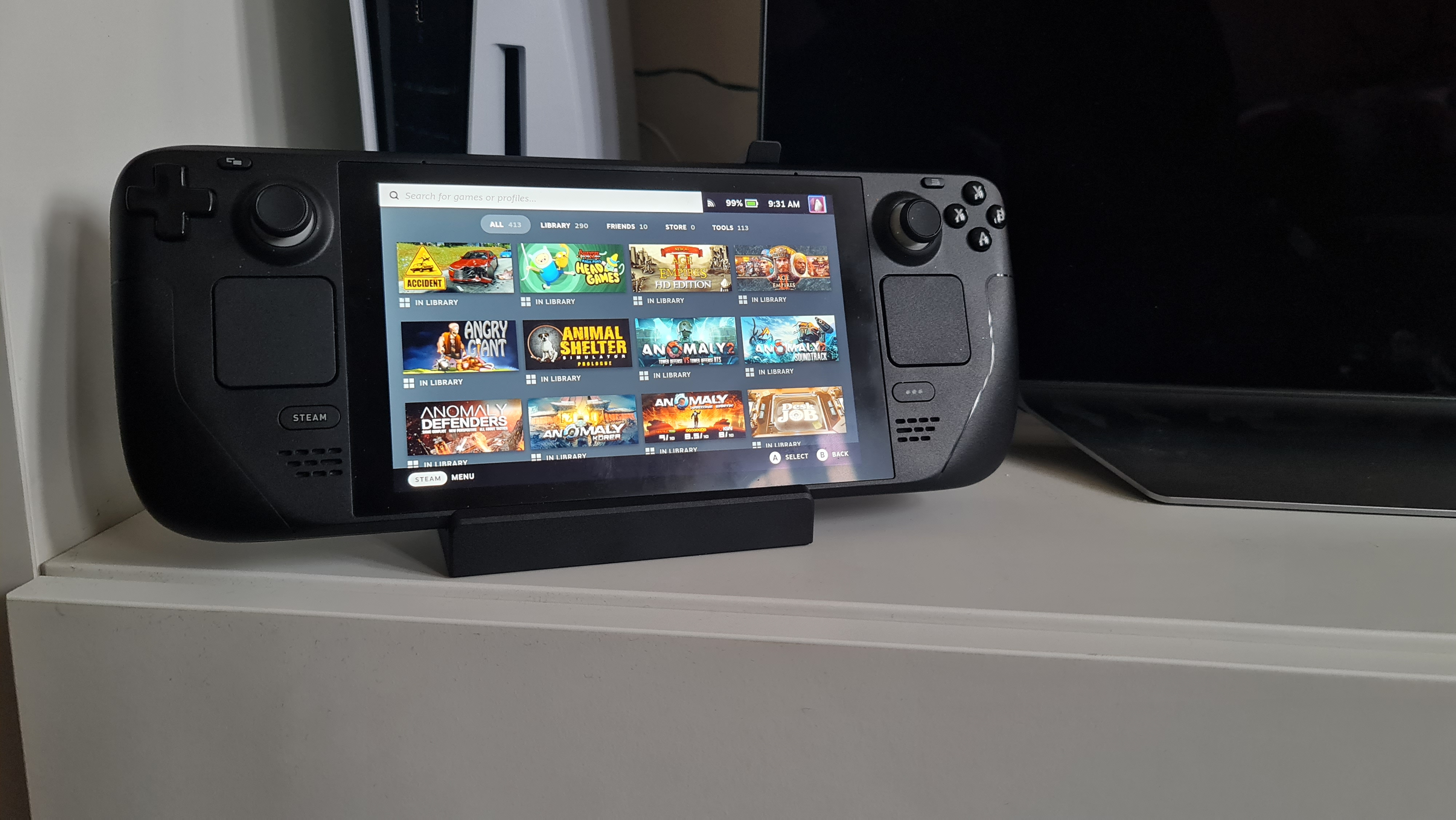GamesRadar+ Verdict
The official Valve Steam Deck Docking Station should be the one to beat, but while there are some perks to official compatibility some quirks remain.
Pros
- +
Easy to use
- +
Top connectivity
- +
Compact design
Cons
- -
Some games still require diving into the settings menus
- -
A few features still missing
Why you can trust GamesRadar+
The official Valve Steam Deck Docking Station has arrived, allowing you to connect your Steam Deck to a TV or monitor with relative ease. In the year or so delay to its launch, other manufacturers have stepped in to fill the gap to offer great alternatives in the race to be the best Steam Deck dock, however, the question now is whether Valve's official kit really is the very best option, especially when those alternatives are significantly cheaper than Valve's $89 / £79 option.
Design & Features

The Valve Steam Deck Docking Station is a neat little device, effectively working as a shelf to hold your Steam Deck whilst simultaneously offering up all the various ports you'd need to connect it to a gaming TV or gaming monitor. The design is well thought out, with a groove in which to sit the Steam Deck itself, and rubber undersides to keep it firmly in place. There's a lip to stop the Steam Deck sliding forward too, which doesn't obscure the screen in any way. It lacks any branding too, so it lets the Steam Deck just exist as part of your desktop or living room setup.
Around the back of the Dock, there are all the ports that you'll probably ever need. There are three USB 3.1 ports, one HDMI 2.0, and one DisplayPort 1.4 (something that's missing from the majority of rivals to the official Dock). There's also an Ethernet port, and USB-C port for power. It handily comes with its own power supply - the same charger as comes with the Steam Deck itself - and then has a USB-C cable that comes from the rear to go into the top of your Steam Deck for connecting it to the Dock itself. The fact it comes with a charger, something that can't be said for almost any of its rivals, means that you can keep the Docking Station setup wherever you need it to be, without having to detangle your wires to take the Steam Deck on the go.

Those USB ports are essential for connecting any peripherals you may want to use. We opted for a combination of a wired Xbox One controller, and a wireless gaming keyboard and gaming mouse during our testing. It all worked seamlessly, with the Steam Deck Docking Station even recognizing the Xbox One controller and changing the interface to match the button mapping - including the Xbox logo itself. However, because the ports are all around the back, using a wired controller can make the setup quite messy-looking, particularly if you're going wired for your other inputs too.
Overall though, it's incredibly easy to set up - but you will need your own HDMI/DisplayPort cable - and then it's almost just a case of plug-and-play. The design is so good, in fact, that others have aped its convenience, including the iVoler 5-in-1 Steam Deck Dock, which does almost everything this official option does bar the Ethernet and DisplayPort connections.
Compared to the iVoler option though, you can tell this official unit is a premium bit of kit. It's well made, has fantastic build quality, and feels really robust - enough that you can take it with you for a portable setup without worrying about damaging it.

Performance
The Valve Steam Deck Docking Station is easily the best option for offering a plug-and-play experience for the Steam Deck. For anything that's Verified for Steam Deck, it'll automatically adjust the settings to get you the best experience for your TV or monitor. For example, running Wolfenstein 2: The New Colossus or Uncharted: Legacy of Thieves Collection was not only seamless but also actually looked pretty good.
Currently, the Valve Steam Deck Docking Station supports up to 4K 60Hz or 1440p 120Hz, and can offer multi-monitor support as long as you use both the HDMI and DisplayPort at once (rather than two HDMI). An update is coming to fix this issue but still isn't live at the time of writing. The same can be said for FreeSync support, which again is en route but not currently available.
It's worth remembering that you're never actually adding any processing or graphical oomph while docking your Steam Deck, so you're still restricted by the hardware limitations of the Deck itself. Some games do require tweaking and fumbling around in the settings, so it's not always a case of just booting up and assuming you're getting the best available for your larger display. It's never going to be quite as easy as docking a Switch - particularly when navigating the Steam Deck UI is never as easy with the unit docked as it is when using the Steam Deck in your hands.

Overall - should you buy the official Steam Deck Dock?
But for the majority of the time and the majority of games we tried, the official dock provides a fantastic experience - particularly if you're comfortable with tweaking settings and diving into menus. Its design is top-notch and sets it apart from the majority of its rivals, especially when it comes to the number of ports it features.
However, at $89 / £79, it's a serious investment, so unless you're sure you're going to make the most of the bigger screen experience then it's worth testing out a cheaper alternative first before making the commitment. The Valve Steam Deck Docking Station is a premium accessory that won't be for everyone.
How we tested the Valve Steam Deck Docking Station
We tested the Valve Steam Deck Dock with a 512GB variant of the Deck for weeks on end to put it through its paces. We tested the official unit with a TV and a monitor - the excellent G1 from LG, a fabulous 120Hz 4K TV, and a 4K monitor for gaming from ASUS - and with a variety of games from our existing Steam library. Games were tested using both the Xbox One controller and a wireless keyboard and mouse combo from Razer.
You can read more about our approach to gaming tech in our full GamesRadar+ Hardware Policy.
To further fill out your Steam Deck setup, check out our guides to the best Steam Deck headsets, and best gaming monitors to elevate your immersion.

Sam Loveridge is the Brand Director and former Global Editor-in-Chief of GamesRadar. She joined the team in August 2017. Sam came to GamesRadar after working at TrustedReviews, Digital Spy, and Fandom, following the completion of an MA in Journalism. In her time, she's also had appearances on The Guardian, BBC, and more. Her experience has seen her cover console and PC games, along with gaming hardware, for a decade, and for GamesRadar, she's in charge of the site's overall direction, managing the team, and making sure it's the best it can be. Her gaming passions lie with weird simulation games, big open-world RPGs, and beautifully crafted indies. She plays across all platforms, and specializes in titles like Pokemon, Assassin's Creed, The Sims, and more. Basically, she loves all games that aren't sports or fighting titles! In her spare time, Sam likes to live like Stardew Valley by cooking and baking, growing vegetables, and enjoying life in the countryside.




